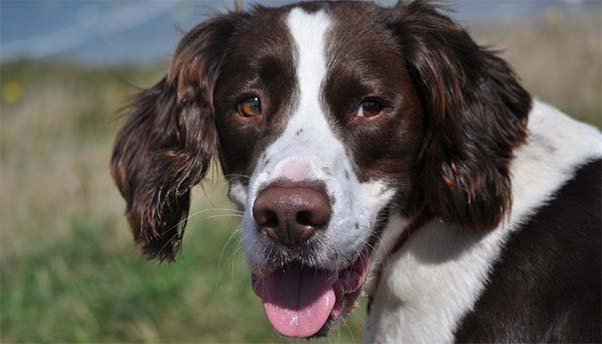NATURAL FLEA TREATMENTS

Spring has arrived, and as the outside world awakens, we thought now would be a great time to share with you some of our favourite natural, chemical-free ways to deter fleas from your home and, of course, your dog.
Not only will these be healthier for your dog, but it is now widely known that neonicotinoids in the flea and tick treatments we are commonly advised and prescribed to use regularly are having a dramatic impact on the UK bee population. Water tests in Scotland have shown that even in an area which had not been sprayed with farm chemicals, the local streams which dogs played in contained high levels of these insecticides.
The ingredients of regular flea or tick preventers are equal to the insecticides used in farming, and they do not target fleas or ticks alone. One teaspoon of the flea treatment we add unwittingly to our dogs’ coats, or give them to swallow, is enough to kill off over one billion bees! * A shocking, scary and sadly true statistic based on the volume of chemicals that comes from the pipettes or is said to emit from your dog’s skin if taken internally.
We cannot grow food without bees – so, if we want to eat in the future, we need to secure their future. We may not have a strong voice in the farming industry, but as pet guardians we can all do our bit for the health of water, soil and bees by choosing more natural deterrents.
Natural flea and tick deterrents for home use can include certain essential oils** such a lemongrass, eucalyptus, cedar, rose, geranium, lavender and neem - one of the most powerful. The neem tree is said to be the only tree in India that insects do not land on - quite an accolade if the aim is to deter jumping insects. In years gone by, cedar was often used as the wood of choice for clothing transportation boxes due to its insect deterrent abilities.
Another lesser known but highly rated essential oil for deterring fleas is rose geranium. You could create a mixture of these oils as all of them are safe to use in the home. Use a spray bottle to lightly mist areas where fleas are a problem, but as essential oils are very strong, you should dilute them first with a carrier oil such as olive oil or coconut oil, or water, before using them. Spray on furniture, on your dog’s bed and even on a collar or bandanna for your dog, but don’t spray directly on to your dog or allow them to lick it. It is possible to purchase specific essential oil flea and tick products to dot directly onto your dog from companies such as Mr Slobberchops.
One common essential oil to avoid is Tea Tree oil which can be toxic to dogs; to be on the safe side it is best to avoid using this around the home.
Alongside aromatic plant oils, a product called diatomaceous earth (DE) is an old favourite for ridding homes of fleas naturally. It can be put directly onto dogs, provided you take care to avoid their eyes and mouth and ensure that they do not breath it in as it’s very drying and could cause issues if it gets into your lungs or your dog’s. It can be sprinkled all around the home, onto skirting boards, under sofa cushions and onto carpets etc. DE is a natural organic substance made from fossilised water plants called diatoms.
DE works by dehydrating and thus killing parasites such as fleas. Fleas also do not build up a resistance to DE as they may do to some chemical treatments. DE can be purchased online, however do look for Himalayan versions for top quality and make sure your DE is both lead and arsenic free. Again, avoid breathing in DE or putting it near eyes, as it’s very drying and could cause problems if it gets into yours or your dog’s eyes or lungs.
It is also worth purchasing an amber collar. Amber is also thought to be effective at deterring biting insects, and amber collars look very pretty on your dog too.
Adding certain herbs to your dog’s food may also offer support: check out Hedgerow Hounds for the best quality handmade flea and tick preventative supplement. The herbs work by strengthening the balance of a dog’s microbiome, which in turn improves levels of B vitamins and other molecules that deter insects.
It is widely shared, albeit anecdotally, that a raw-fed dog has fewer fleas and ticks. We now have an overwhelming volume of evidence demonstrating an improved microbiome in a raw-fed dog, and perhaps this could be playing an important factor in reducing flea and tick infestations.
*Dave Goulson is a Professor of Biology at the University of Sussex. Here is his incredible explanation on insecticides:
https://youtu.be/JZ37CUnxzfY?si=Bu8lJy1ogQtaIA_M
** Check out our other blog about essential oils and which ones are safe to use in a home with pets >>> https://thefarmersdog.uk › blogs › guides-and-advice › essential-oils-safe-or-not








